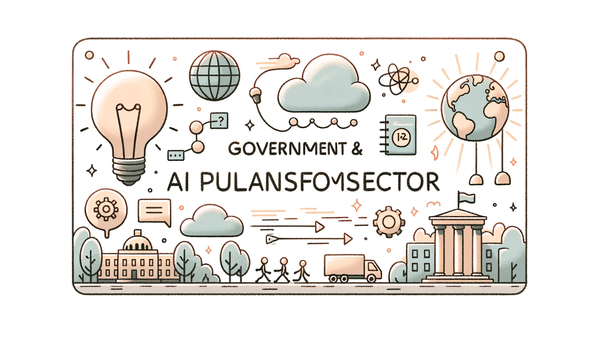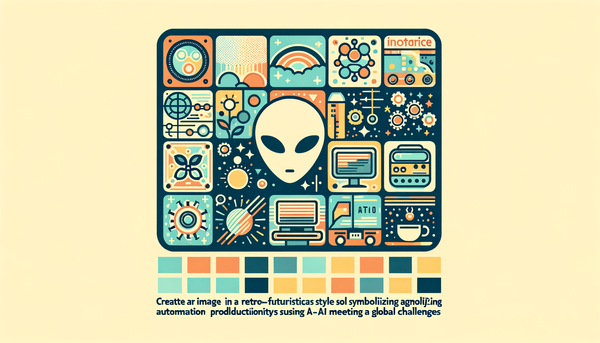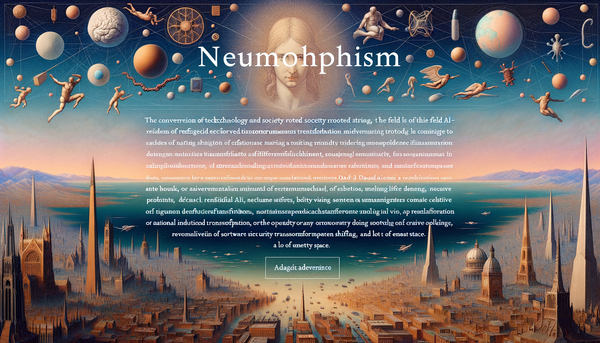DOGE's Bold Move into AI and Industry Developments
In this comprehensive analysis, I explore the unfolding drama and innovations across the AI landscape – from antitrust battles and regulatory tussles involving tech giants like Google and Microsoft, to the remarkable resilience of Chinese tech firms led by Huawei amid intense geopolitical pressure, and the transformative rise of AI applications in government and coding. I also delve into unexpected cultural shifts, such as Uruguay’s embrace of audio content, showcasing how AI is reshaping industries, governments, and lifestyles worldwide.
Regulatory Tussles and Shifting Landscapes in AI Investments
Stepping right into the center of the ongoing conflict between government regulators and tech behemoths, I find it fascinating how the antitrust saga has re-emerged around Google. The recent decision by the Justice Department, as reported by the New York Post, to drop its bid to force Google to divest from its investments in key AI startups – including Anthropic, a rival to OpenAI – underscores the precarious balance between fostering innovation and ensuring healthy competition in the technology sector.
Historically, the U.S. government has been a staunch advocate for monopolistic oversight, and the continued push for the sale of Google’s popular Chrome browser reflects their enduring commitment to breaking up suspected monopolies in digital markets. I recall reading a memorable quote by Elon Musk:
"We are not trying to replace humans, but to make human work easier, faster, and more productive. AI can free up humans to focus on higher-level tasks."
While the DOJ’s move to safeguard fair competition invokes this sentiment indirectly, it is clear that the regulatory apparatus is also cognizant of the unintended consequences that sweeping divestment measures could trigger, such as hampering broader technological advancements – particularly in generative AI investments.
Further complicating the narrative, a coalition of 38 state attorneys general has aligned itself with the federal initiative against what is perceived as an illegal search monopoly. The emphasis here isn’t simply about business competition; it reflects a broader concern about how concentrated control in tech can stifle innovation and limit consumer choice. I often draw parallels with historical antitrust actions – think of the breakup of AT&T – where government intervention, while disruptive in the short term, ultimately paved the way for a more dynamic marketplace.
The strategic positioning of Google’s stake in Anthropic presents a layered challenge. This investment may ripple through the competitive landscape, potentially tilting the balance in favor of Microsoft-backed OpenAI. As the legal battles unfold with a trial slated for April, one can only speculate about how these decisions will impact not only the companies involved but the broader future of AI development. I noted in a recent discussion on AI: Our Best Hope or a Challenge for the Future? how regulatory decisions can steer the direction of technological progress, a point that resonates deeply in this context.
Geopolitical Innovation: Huawei and the Battle for AI Chip Supremacy
Shifting my focus to global power plays, I was struck by how Chinese tech titan Huawei continues to chart its own course amid escalating U.S. sanctions. A report from Wccftech reveals an impressive plan by Huawei and its partner SMIC to produce approximately 750,000 advanced AI chips despite the technological constraints imposed by U.S. policies.
This development is nothing short of remarkable. The ability of SMIC to produce 7-nanometer semiconductors – a feat long dominated by Taiwanese firm TSMC – underscores both the ingenuity of Chinese semiconductor engineers and the accelerating pace of innovation when one is cornered into a crisis. Stripping away the veneer of sanctions, I see innovation blooming out of necessity; companies are forced to think creatively, often utilizing modified versions of existing technologies such as NVIDIA GPUs to navigate around restrictions.
While the technical details might seem arcane to the average reader, the implications are profound. Achieving a capacity for up to 400,000 advanced AI chips monthly doesn’t just signify an industrial milestone – it heralds a potential reshaping of the global tech supply chain. Innovation in adversity is a powerful narrative, and Huawei’s resolute push reminds me of historical underdogs who, against all odds, turned scarcity into opportunity.
Critics might argue that sanctions could choke off progress; however, this example demonstrates a crucial point: regulatory measures often spur unexpected breakthroughs. The report’s mention of Huawei’s exploration of its own alternative processing languages, like CANN versus NVIDIA’s CUDA, is a prime example of how necessity fuels technological diversification. As I reflect on this, I cannot help but recall another insightful perspective by Kai-Fu Lee, who once remarked:
"I believe AI is going to change the world more than anything in the history of mankind. More than electricity."
The evolution of semiconductor technology, especially under constraints, is very much in the spirit of that transformative potential.
Government Automation and the Dawn of Digital Purges
Venturing into public sector innovations, I recently encountered the fascinating account of DOGE’s deployment of its GSAi custom chatbot to 1,500 federal workers at the General Services Administration (GSA). This initiative, detailed by Wired, demonstrates how artificial intelligence is being harnessed to streamline routine government tasks. The chatbot, reminiscent of popular models like ChatGPT, aims to reduce the administrative burden by drafting emails, summarizing documents, and even writing code.
What piqued my interest was the dual narrative of efficiency versus caution. On one hand, automating general tasks is a win-win for a growing bureaucracy struggling with outdated systems. On the other, internal memos caution against using GSAi for transmitting sensitive or personal data, a reminder of the inherent limitations of early-stage AI tools. The quip that the assistant “provides responses about as good as an intern” might seem humorous, but it subtly underscores the gap between human intuition and machine-generated outputs.
This juxtaposition of enthusiasm and skepticism is not uncommon in discussions around AI in government. While agencies like the Treasury and the Department of Health and Human Services are reportedly exploring similar implementations, the mixed reactions from federal employees reveal a landscape in flux. As I consider these developments, I reflect on our DOGE’s New Chatbot for Government Automation piece which emphasized both the promise and the pitfalls of embedding AI into large, bureaucratic systems.
Using AI to trim workforce inefficiencies in government introduces a fascinating debate about the role of technology in public administration. It raises poignant questions: How much should automation replace human judgment? And to what extent should we trust algorithms with decisions that could have far-reaching consequences? I remain cautiously optimistic, believing that the measured integration of AI – guided by strict protocols and regulatory oversight – can drive meaningful improvements without compromising security or accountability.
Corporate Rivalries and the Reinvention of AI Leadership
The race for AI supremacy is an arena where titans clash, and the ongoing competition between Microsoft and OpenAI is a testament to that fierce rivalry. Microsoft’s recent announcement of their in-house AI models, positioned as worthy competitors to OpenAI’s offerings, signals a strategic push to control more of the AI narrative under the stewardship of CEO Satya Nadella.
In building these models internally, Microsoft is not merely investing in technology; they are staking a claim in the future of AI innovation. This move can be seen as both an evolutionary and a defensive strategy. By developing proprietary systems, Microsoft can ensure that its innovations remain insulated from the potential disruptions that come with intense market competition or unfavorable regulatory conditions. Meanwhile, the lingering questions around Google’s investments in Anthropic – which remain intact as reported by Bloomberg – add another layer of complexity to the corporate chessboard.
This multifaceted competitive landscape reminds me of a scene from a well-known novel where rival dynasties maneuvered for ultimate control, each move laden with both opportunity and risk. Microsoft’s innovation strategy is like a well-calculated gambit in a high-stakes game. It illustrates a broader trend in which even as regulatory pressures mount, corporate innovators continue to chart bold courses for the future.
In a world where technological advancements overlap with antitrust investigations, the stakes have never been higher. As companies like Microsoft, Google, and emerging players continue to innovate while navigating legal challenges, we must consider the broader implications on global tech leadership. These developments are redefining competition in an era where AI is not just a tool but a strategic asset that can transform entire industries.
Audio: The Underdog in the Changing Media Landscape
While much of the AI discourse primarily revolves around semiconductors, antitrust litigation, and executive boardroom battles, a quieter revolution is taking place in the realm of audio content. Forbes recently highlighted Uruguay’s growing passion for audio, where podcasts, audiobooks, and other audio formats have rapidly permeated everyday cultural life. This trend signifies more than just a change in consumption habits; it reflects a broader digital transformation where accessibility and convenience are reimagined through AI.
The way I see it, audio content is emerging as a favored medium for storytelling and information-sharing. The popularity of podcasts and audiobooks is not coincidental. The digital infrastructure – powered by cloud computing, advanced compression techniques, and machine learning algorithms – is making high-quality audio content both ubiquitous and compelling. Uruguay’s love for audio is a microcosm of a global shift, one where traditional reading or video consumption is steadily giving way to something more immediate, more accessible, and often more engaging.
This evolution is also interconnected with portable technology trends. Smartphones, smart speakers, and wearables have all contributed to redefining how content is consumed. For instance, while I was reading about these developments, I recalled the insightful piece on AI: Our Best Hope or a Challenge for the Future? which discusses how technology often reshapes cultural habits long before policy catches up. In embracing audio, societies are not just changing their entertainment mediums; they are engaging in a digital renaissance where information is no longer tethered to screens.
Bringing an anecdote from my personal experiences, I remember a time when listening to audiobooks was my sole escape during long commutes. The power of audio to captivate the mind, transport listeners to different worlds, and foster a unique connection with the narrative is unparalleled. As AI-driven algorithms become better at curating audio content, we may soon see even more innovative applications – other than just recommendation engines – such as personalized audio news summaries or dynamic podcast generation based on real-time events.
AI Coding Assistants: Revolutionizing Software Development
No discussion on the future of AI would be complete without highlighting the explosive growth in the AI coding sector. Recent buzz in the tech sphere centers on Cursor, an AI coding tool from Anysphere, which is reportedly in talks to raise funds at an eye-popping $10 billion valuation. In parallel, other companies like Codeium and Poolside are forging ahead, leveraging AI to revolutionize the way code is written and maintained.
The surge in investor enthusiasm for AI coding assistants speaks volumes about the changing dynamics of software development. These tools are not only automating mundane coding tasks but are also enabling developers to focus on creative problem solving and innovation. In an industry marked by rapid evolution and intense competition, the integration of AI into coding workflows offers a tangible competitive edge.
I can’t help but remember my early forays into coding – a time marked by painstaking debugging and time-consuming research. Now, with advancements like AI-driven editors and coding assistants, I see a transformation unfolding. These tools effectively act as digital collaborators, assisting in writing clean code, detecting errors, and even suggesting optimal implementations. The economic implications are equally staggering; as companies like Anysphere push their valuations skyward, it mirrors a broader market sentiment that values efficiency and scalability above all else.
From a macro perspective, this trend highlights the opportunities and challenges that come with the convergence of AI and software development. Although these advances promise to streamline workflows and reduce human error, there remain concerns about over-reliance on automation and the consequent impacts on coding skills and creativity. As we navigate these uncharted waters, it becomes crucial to strike a balance between harnessing the power of AI and maintaining the irreplaceable value of human insight.
Integrating Cross-Domain Innovations: A New Era in AI
As I reflect on the various pieces of news, a consistent theme emerges: artificial intelligence is not a siloed phenomenon. Instead, it is a pervasive force influencing everything from government operations and corporate strategies to cultural preferences and developer productivity. The narrative that unfolds here is one of both disruption and opportunity.
For instance, the juxtaposition between the legal and regulatory battles surrounding Google’s AI investments and Microsoft’s confident in-house AI model development presents a dramatic tableau of high-stakes competition. Meanwhile, innovations in semiconductor manufacturing by Huawei and SMIC, despite the weight of international sanctions, underscore a global determination to overcome obstacles and redefine technological capabilities.
It is worth noting that these advancements aren’t occurring in isolation. On platforms like DOGE's Bold Move into AI, discussions highlight how cryptocurrency communities are also engaging with AI in groundbreaking ways, from developing custom chatbots to exploring decentralized applications that can operate across government and commercial sectors. Such articles remind me that the AI ecosystem is deeply interconnected – every breakthrough in one area inevitably influences developments in another.
The cross-fertilization of ideas is perhaps best illustrated by the ongoing evolution of AI in coding. The rapid ascent of companies like Anysphere signals not only technological innovation but a redefinition of what it means to be a coder in the modern era. This revolution is reminiscent of historical shifts, like the industrial revolution, where automation redefined labor and productivity. Today, we witness a digital analog – a transformation where code is written faster, smarter, and more efficiently, ultimately bolstering economic growth and fueling new startup ecosystems.
Moreover, this period of rapid change invites discussions on the ethical and societal implications of technology. With the increasing integration of AI across critical industries, there is a parallel need for robust dialogue on regulation, data security, and the future of work. While I remain optimistic about the promise of AI, it is clear that stakeholders – from tech giants to government regulators – must engage in ongoing, transparent conversations to chart a path that safeguards innovation while protecting public interests.
The Road Ahead: Challenges, Opportunities, and the Human Touch
Looking forward, I am convinced that the coming years will be defined by both remarkable achievements and significant challenges in the AI realm. The juxtaposition of fierce corporate rivalries, as seen with Google and Microsoft, against the backdrop of global innovation push exemplified by Huawei’s semiconductor breakthroughs, is emblematic of a transformative era in technology.
One cannot ignore the cautionary tales emerging from the public sector’s experiments with AI chatbots in government. While these tools promise to unlock unprecedented efficiency, they also remind us of the need for human oversight and ethical safeguards. History teaches us, as echoed in timeless proverbs like "With great power comes great responsibility," that technological progress must be tempered with wisdom and accountability.
Similarly, the fervor with which investors are approaching AI coding assistants reflects a broader confidence in technology’s potential to revolutionize traditional paradigms. However, this excitement should be balanced with pragmatic concerns. As I’ve observed, rapid technological shifts often bring unexpected challenges – from cybersecurity threats to workforce displacement – which demand careful management and social commitment.
My journey through these recent stories leaves me with an overall optimism tempered by realism. As evidenced by the multinational efforts to innovate despite sanctions, the measured integration of AI in federal administration, and the cultural shift towards audio content seen in Uruguay, the influence of AI is both multifaceted and inescapable. It is a domain where regulatory frameworks, corporate strategies, and grassroots innovations all intersect, creating a vibrant tapestry of change.
As a passionate observer of AI’s unfolding narrative, I find it important to stress the enduring role of the human touch in this tech revolution. Despite the tremendous strides in automation and digital collaboration, it is our creative thinking, ethical judgment, and resilience that will ultimately determine how well we harness the full potential of AI. In the words of another insightful voice from our community, "Innovation is not the mere result of technology, but the result of human creativity meeting opportunity."
This sentiment resonates across all the threads of our discussion today – whether it’s regulatory scrutiny, corporate disruption, or shifts in cultural consumption. In every sphere, the blend of human ingenuity with technological prowess is what drives true transformation. And while we may encounter typos or minor slip-ups along the way (after all, we’re all human here), it is this very imperfection that adds character to our collective journey in the digital age.
Further Readings
For those interested in exploring these themes further, I recommend reading the detailed reports and analyses from leading sources such as the New York Post, Wccftech, Wired, Fortune, Forbes, Bloomberg, and TechCrunch. These pieces offer additional perspectives that complement the insights shared here.
As I continue to follow these dynamic developments, I invite you to join me in reflecting on the evolving landscape where technological innovation and human creativity converge. Our journey into the heart of AI is far from over – each new story is a fresh chapter in an epic saga of transformation, competition, and endless possibility.




